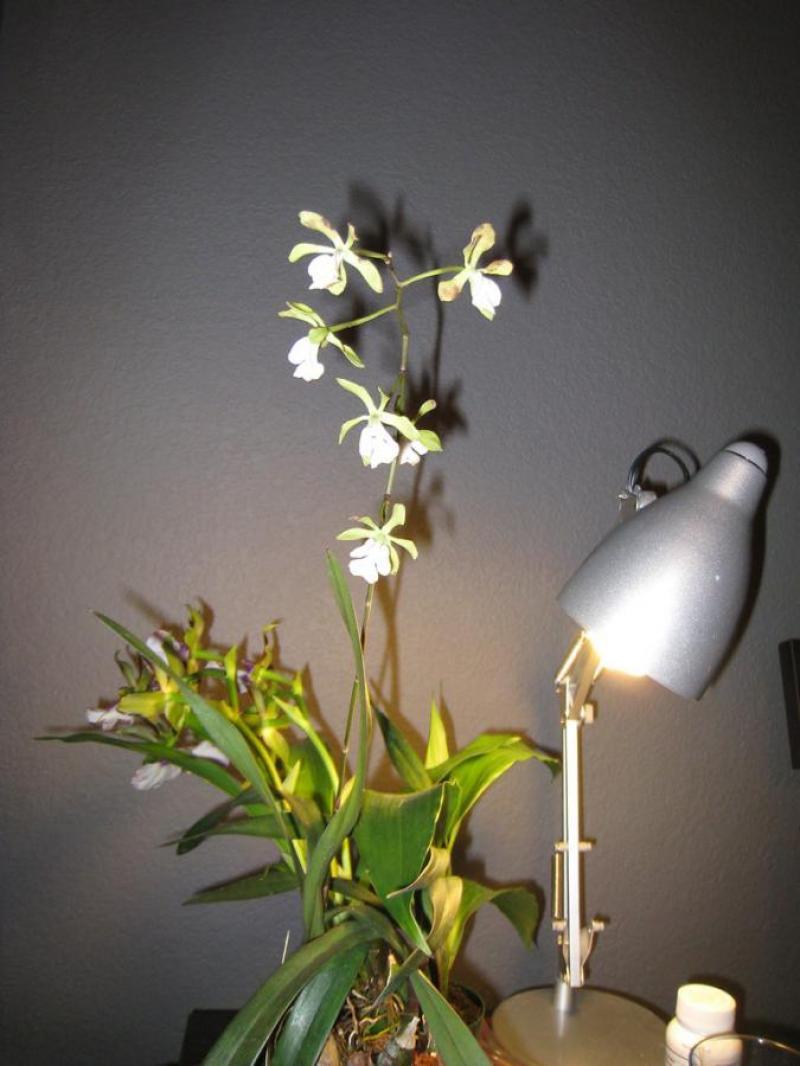Encyclia randii
Also known as: Rand's Encyclia or Encyclia randii h.v. rondoniensis Encyclia randii h.f. alba Epidendrum atropurpureum var. randii Encyclia randiana Epidendrum randianum Encyclia randiana h.v. rondoniensis in the subfamily: Epidendroideae
Native to: Amazonas - Brazil Amazonas - Peru Loreto - Peru
General Information
Rand's Encyclia is a sympodial hot growing epiphytic orchid belonging to the sub family Epidendroideae native to Brazil and Peru. It is named after the English Orchid Enthusiast .
Plant Description
Sympodial. Grows to 60cm. Each new growth has numerous erect rigid leaves that grow to 1-50cm long. Pseudobulbs grow to 2.5-10cm
Substrate(s)
- Coarse
- Medium
- Bark
- Charcoal
- Spaghnum Moss
- Perlite
Care Notes
This orchid goes into a dormancy phase during winter, during this phase it is best not to provide water unless the plant is starting to look thirsty. The lack of water increases the chance of flowering in spring, and also reduces the likelihood of any rot forming. Do not resume watering until new growth has appeared and is growing strongly.
Often a period of intense growth occurs after dormancy. During this time the amount of light, water and fertiliser the plant receives will directly impact the amount of growth that occurs during this time, and in the case of seedlings, will reduce the time required to reach maturity.
It's recommended to heavily reduce the water amount at the middle to end of autumn to trigger dormancy. Leaves on older bulbs will begin to drop during this time while the newer bulbs continue to mature until terminal leaves appear at the tip of the pseudobulbs.
Repotting can be done any time of the year though it's best to do it in early spring when new growth is appearing as this also means new roots will appear to help the plant anchor into the new media and offset any damage to established roots during the repotting process.
Climate
Grows at low elevations. Rainfall ranges from 38mm to 262mm per day, heaviest in September and lightest in February. Humidity ranges from 70% to 81%, highest in October and lowest in March. Temperature ranges from 23C to 32C, highest in March (23C to 32C) and lowest in January (23C to 29C).
Watering
These orchids prefer a wet-dry cycle between waterings, they should be watered frequently but only when the moisture is approaching dryness, where the pot feels light and/or the media looks dry. Keep an eye on mounted orchids in warm weather as they may dehydrate quickly.
Fertiliser
dormant-medium-demand-orchid Use balanced fertiliser during Spring and Summer. Be sure to flush out excess fertiliser by running water through the media regularly year round. Apply fertiliser regularly at half strength year round. Use a high Nitrogen fertiliser during Spring and Summer. Use a high Phosphorous fertiliser during Summer.
Potting
These plants are quite forgiving and will do well repotted ever 2-3 years. The mix should be coarse, well draining, and allow space for air to move and for roots to grow.
Alternatively, these plants will also do well mounted to tree fern or cork slabs, or mounted to trees.
Best time for repotting or mounting the orchids is the end of winter when new growths start to appear. Avoid repotting during hot weather,
Use water retentive media such as moss to prevent roots from drying out quickly This plant does very well in baskets or suspended pots This plant does well mounted. Repotting is best done annually.




















